Training Your Racing Pigeons to Break
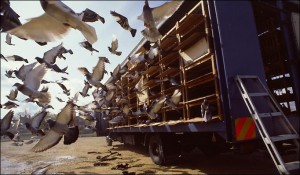 What is breaking? Breaking is when a bird separates from a flock and heads out on his own course. If you observe a flock of racing pigeons you will notice there is usually on leader once they are on a straight course. Occasionally there are a few that switch back and forth. The question is what are the other birds in the flock doing? They are following the leaders. When we talk about breaking then, we are also talking about leading.
What is breaking? Breaking is when a bird separates from a flock and heads out on his own course. If you observe a flock of racing pigeons you will notice there is usually on leader once they are on a straight course. Occasionally there are a few that switch back and forth. The question is what are the other birds in the flock doing? They are following the leaders. When we talk about breaking then, we are also talking about leading.
Attempting to undo instincts
Pigeon by nature are gregarious. They want to be together for security. Young birds especially have a hard time breaking. It’s in their instincts for survival. The predators usually seek out the loner as it might be sick or injured which in nature would be the reason the bird would be solo. Yet our goal is to have winners and leaders. When we train to produce leaders and birds that break we are attempting to train against instincts. This is important to remember.
How do you develop leaders and birds that break?
Breaking and leading are two different things. A leader is in front of the flock following his own course but with the security of the flock. The bird that breaks is on his own, but also following his own course. The common denominator is that both are following their own course. This is what we must train our racing pigeons to do. We must train them to follow their own course.
There are two methods in teaching the birds to follow their own course. The first is by single tossing. The bird has no choice but to follow his own instincts and choose the way home. Single tossing is time consuming depending on the size of your flock but is a very valuable training technique. For pigeon fanciers two of the most precious commodities are time and money.
The second method is to toss birds in small groups. I feel that tossing in small groups is better than single tossing. It takes less time and when birds are in small groups, they are still racing each other and battling to be leader. Start out by breaking your flock into 3 groups. For that toss there should have been at least three leaders, often more, as the birds battle for the lead position. Later, you can break them down into smaller groups of less than ten and eventually down to groups of three. In small group tossing you are developing leaders, which is developing the same instinct that will produce birds that will break and follow their own course.
When tossing small groups or individual pigeons it is important to make sure they do not get together into one large group. Often a flock may appear to go out of site and eventually fly back over the release point 10-15 minutes later. Once way to try to prevent this is to let the birds go at not only different time intervals but also at different distances. Choose the distance that you want to train from. Find a very close road that runs perpendicular to the distance. Let one group go. After they are out of sight, drive 1-5 miles and let another group go. Repeat until all the groups have been released. This may prevent them from grouping up into one larger group.
Some experiences from small group tossing.
Often when we have a training toss we gauge the success or failure of the toss on how the pigeons arrive home. We are not able to see what the birds do between the release point and the arrival home. The only factor we can see and measure is when they arrive home and in what condition they arrive. When we release the birds as one large group, we have only one measure of how the birds trained.
When I started tossing in smaller groups, I made some interesting observations. I would often toss my birds in 3 groups of approximately 12-20 pigeons each. I would record what time I released each group, how long it took for them to leave out of sight and what heading they were last seen at. When my racing pigeons arrived home, they had Tauris bands on and were also clocked by the computer if they arrived home before me.
Some times, two groups would come home together yet another group would come home in singles and doubles. Other times the last group released would be the first group home and the first group released would be the last to arrive. One group would make excellent time and another would take twice as long to get home.
How do you end up with such different results when all groups were released from the same point? As stated before, we are only observers of the release and the arrival but not the dynamics of what happen between those points. My conclusions then are only theories as they can not be proven until one can observe the dynamics of the actual training flight. Here are my ideas on why we have such strange results.
You can often observe at the release point that the birds will start to head out one direction with one leader and then a different bird gets in the front and they take a new heading. Or sometimes, one bird starts to break and the flock turns to “pick them up” staying true to their gregarious nature. There is a battle for the lead position and the direction of travel for the entire group then depends on who is holding that lead position. I think this explains the return of singles and doubles. I believe that if the lead bird takes the flock on the wrong heading, slowly, the other birds realize this, break off and head home on their own. This would explain why there would be such a broken return.
In the case of one group doing poorly and the other groups having a good toss could be explained by the same event. The leader of the poorly performing group took them on longer flight but not enough for the entire group to break or eventually a different bird took lead and brought the team home on the right course.
In any flock there are excellent birds and poor birds. There will always be a battle for the lead position. Until the poor leaders are lost from training, there is always the chance of a poor return. So this is the secondary goal of our training. To train until we have enough confident leaders and any birds that are true followers or dummies are gone from the team.
Training Your Racing Pigeons to Break by Domanski Family Lofts
The Leading Online Pigeon Racing and Racing Pigeons Magazine – The Pigeon Insider

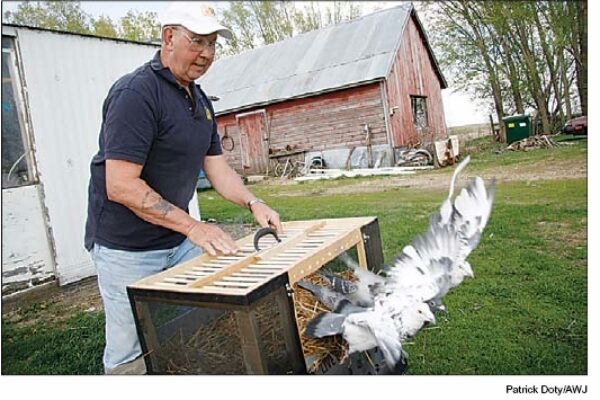


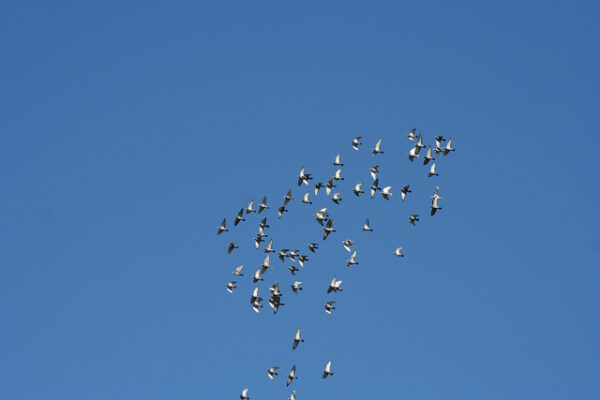
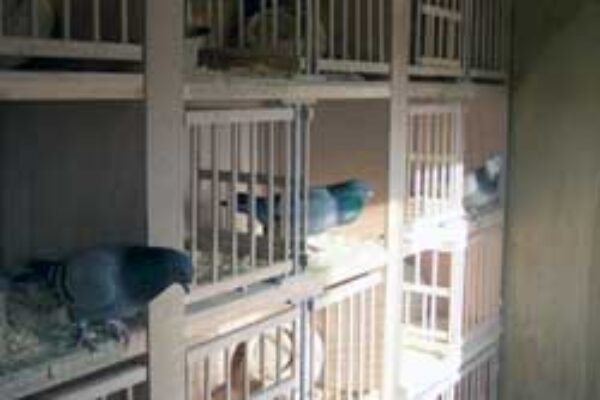
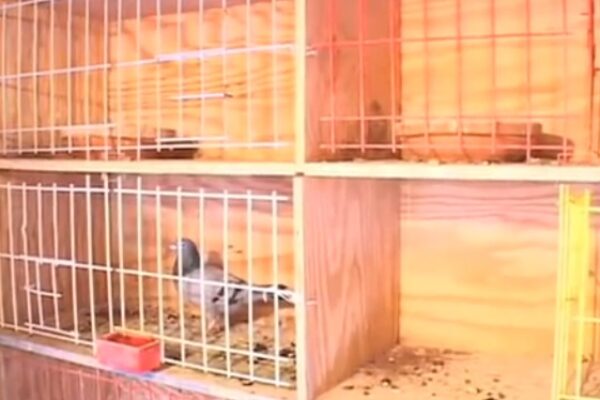


I am a pigeon flyer from Lowood Qld, I fly with the lockyer club…another pigeon flyer approached me last year , he wanted me to toss with him..i would like some feed back on weather to fly as a large pack or fly small lots such as 10 pigeons or less to get the best out of the …2015 year was a big flop for me,i think it may be related to the large flock as the birds didn’t have to think to hard to get home…what do you think…
i want orignal racing pigeon im from pakistan
2 at a time is good for creating competitiveness between them, I do the same with race horses and it improves them no end
in my experience by far the easiest option is to get birds that like to race hard, ie front runners. you’d never make a front runner out of an ordinary pigeon. you breed birds that find the front of the flock then the rest is fairly immaterial. 2 up at a time seems to work well, as does plenty of experience on your line of flight (not the flocks) having said that loft position does count, besides the skill of the fancier and the well-being of the flock. is there an unfairer form of competition than pigeon racing? rj – former Adelaide flyer and now a kiwi flyer
I think this is an interesting article. I don’t think that you can win short races this way unless all the pigeons in the race have to follow a specific route home ( between 2 mountain ranges or large bodies of water) if the front the birds are returning too is wide the birds that win the race win it from the release point. Go watch a large release if you are able to, there are always a handful of birds that take off. They don’t waste time circling. The best method I have found to train for this is to find where there are large flocks of commies. I scare the commies and release my birds so they learn to fly threw the commies. It is time consuming but well worth the effort. Good flying to all
Breaking from the flock is an unnatural thing for Pigeons to do. Their desire to get home must supersede flock dependance. This comes from love of loft and motivation to get home. Naturally to lead would be better and easier to travel on a straighter line home.
Birds must have the confidence and desire to break, single tossing and small group tossing helps build that confidence to travel alone.
What evidence do you have that our birds “race” or “battle for the lead” on the way home? As stated above (or, contradicted) we have no idea what happens between the release point and home. The birds do not know they are in a race. To assume they “battle” or “compete” to be in front is pure speculation IMO. I agree that single, double, or small group tossing builds necessary confidence, but not because they race each other home. Small group tossing with another fancier who live off the line of flight would be most beneficial.
Hi pigeon Photographer i find good pigeons find the short way home that is why they are good pigeons then you have your pigeons that are not as good but they will give you a good
race when sent and then there are the bad pigeons well they are always last getting home
and that is 70 to 80% of the birds on a race trailer. Regards Brad,
Hi Chris this is the way i see it and it is very simple good birds always find a shorter way home
better birds follow some and your bad birds are your followers in a race trailer in most races
70 to 80% of the birds are birds that are not what we strive for all you have to do is watch your
club and combine and fed results it will will be different for short and long distances in most
cases but it is very simple to me Brad.
Brad,
I single tossed a couple of years back,(I think it does absolutely nothing to make your birds Break!!) but it did teach me something. So im up releasing the pigeons one at a time. First bird up…….circles and circles will not leave, finally it makes its way home. Next bird……like a rocket for home. Long story short, my best racers were the ones that shot out like a rocket and the duds would just circle. And even the next time and the time after that the duds remained duds they didn’t learn anything.
Hi Jeffc thats why i said your good birds will find the quickest way home the race basket sorts the
birds out Brad.
Good points above.
As the author stated time and money are a factor.But to be a good fancier or a champiom fancier you have to have both these factors.
I found that tossing my birds 2’s up worked the best for me.Started with small groups at first 6 to 8 at a time and as these birds built up confidence, then I tossed them 2 at a time.Single up also works well but I feel birds need to race each other home and develope that competitive instinct.